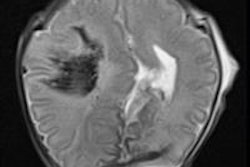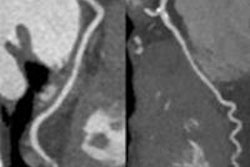
Radiation burn is a common, often painful side effect of radiotherapy. The severity of acute skin reactions at the irradiated site is associated with the total delivered dose, the dose per fraction, and the size of the treatment area. It can progress from mild irritation to confluent moist desquamation and considerable pain. In spite of major improvements in conformal radiotherapy treatment planning, the risk of radiation injuries to the skin and normal tissue can limit the dose applied to the target tumor volume.
Preclinical research has shown that x-ray microbeam radiation delivery can reduce normal tissue damage. The combination of a very small beam spot and the ability to perform targeted irradiation makes it possible to selectively irradiate defined targets. Spatially fractionated photon radiotherapy utilizes an array of thin (25-75 µm wide) and nearly parallel synchrotron-generated microplanar x-ray beams, separated by distances of 50-400 µm, with the microarray geometry maintained in the tumor. Compared with broad-beam irradiation, x-ray microbeam irradiation causes less toxicity.
Focused proton microbeams called "microchannels" work in a similar manner. They differ in that they remain separated in normal tissues, but spread out as they reach the targeted tumor to achieve a homogeneous dose distribution inside the target volume. Proton microchannels therefore have the potential to reduce normal tissue toxicity while uniformly hitting the target volume.
Microbeam research is being undertaken at SNAKE (Superconducting Nanoscope for Applied Nuclear Experiment), an ion microbeam facility located at the Munich 14 MV tandem accelerator in Germany. As a follow-up to a study undertaken in 2013, which demonstrated that proton microchannel irradiation caused less of an inflammatory response in a human skin model than conventional homogenous broad-beam irradiation, a multinational research team has investigated whether microchannel irradiation with micron-sized x-ray and proton beams could also minimize the risk of normal skin damage (Physica Medica, 27 April 2015, pii: S1120-1797(15)00095-2).
Comparing irradiation modes
Jan Wilkens, head of medical physics at the Department of Radiation Oncology at Technische Universität München, and co-researchers, used four different microbeam irradiation modes to compare viability and genetic damage on a 3D human skin model (EpiDermFT). The skin model consisted of a dermal layer of skin and a cornified, granular, spinous, and basal layer resembling normal human epidermis. The tissue itself consists of human-derived epidermal keratinocytes and dermal fibroblasts.
The types of microbeam irradiation modes for both x-rays and protons included a homogeneous field, lines, and small and large channels. The intended average dose over the irradiated area was 2 Gy. The cell viability of the skin was quantified 40 hours after irradiation, and genetic damage in epidermal keratinocytes was measured via a micronuclei assay.
The researchers reported that genetic damage -- determined by the measurement of micronuclei in keratinocytes -- was significantly reduced after microchannel irradiation compared with homogeneous irradiation. This proved true for both x-ray microbeams and proton microchannels regardless of the irradiation mode, indicating that the mode of radiation application rather than the radiation quality impacts cell viability. Further, results showed that homogeneous irradiation equated to a cell viability of about 39% or 40%, whereas the microbeam/microchannel irradiations ranged from 77.9% to 82.5%.
In addition to causing less immediate skin damage, the authors noted the lower number of micronuclei in skin keratinoyctes after microchannel irradiation may imply a reduced risk of developing mutations in normal tissues, leading to a lower risk of possible future cancers. However, clinical treatment is a number of years away, Wilkens told medicalphysicsweb.
Standard proton therapy systems cannot produce beams of microchannel size, although this may be possible with future generations of equipment. Researchers at the Munich Centre for Advanced Photonics are exploring the potential of laser-driven x-ray sources for radiotherapy. They are also working on compact sources as substitutes for large-scale synchrotrons. They have now completed a preclinical study in vivo, and plan future studies to assess the long-term effects of microchannel irradiation on normal tissues.
© IOP Publishing Limited. Republished with permission from medicalphysicsweb, a community website covering fundamental research and emerging technologies in medical imaging and radiation therapy.



















